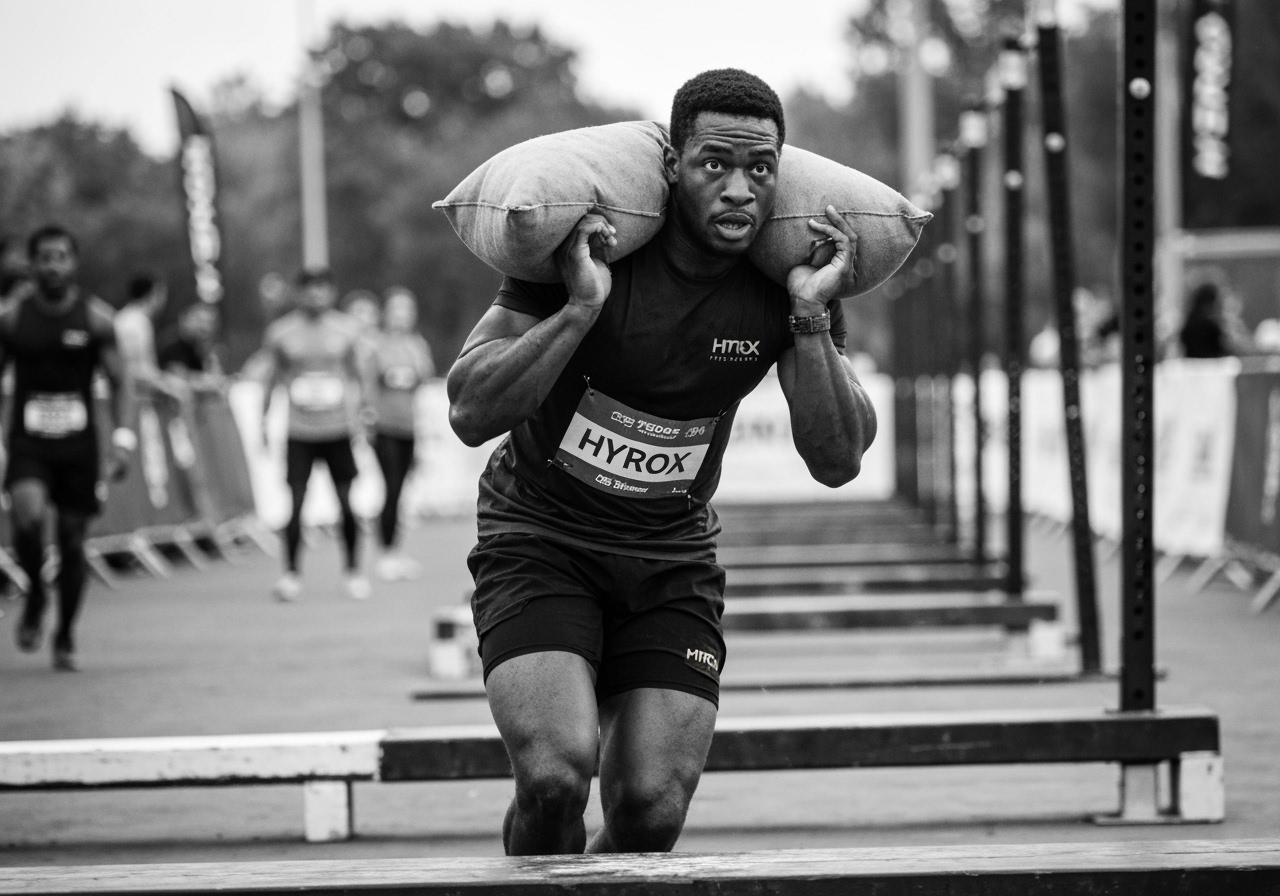
The row is one of the most deceptively tough stations in HYROX. At 1,000 meters, it's not just a test of endurance but also of pacing and efficiency. Go out too hard and you'll pay for it in your legs. Go too easy and you'll lose valuable seconds. The good news? With the right approach, you can turn the row from a draining station into one of your strongest.
Why the HYROX Row Matters
The row is one of the most deceptively tough stations in HYROX. At 1,000 meters, it's not just a test of endurance but also of pacing and efficiency. Go out too hard and you'll pay for it in your legs. Go too easy and you'll lose valuable seconds.
The good news? With the right approach, you can turn the row from a draining station into one of your strongest.

1. Nail Your Pacing Strategy
The key to rowing in HYROX is control.
Smart Pacing Approach:
- Avoid the sprint trap: Many athletes burn out by treating the first 250m like a sprint. Instead, settle into a sustainable pace.
- Find your split time: Practice at different paces in training. For most athletes, staying between 1:45–2:00/500m keeps the row manageable without taxing the legs too early.
- Negative split when possible: Start controlled, then push harder in the final 200–300m to finish strong.
💡 Pro Tip: Set your monitor to display split time per 500m rather than total meters—it's easier to lock into consistent pacing.
2. Perfect Your Rowing Technique
Technique efficiency is what saves energy for later stations.
Key Technique Points:
- Drive with the legs: 60% of your power should come from a strong leg push, not frantic arm pulls.
- Sequence the movement: Legs → hips → arms on the drive. Arms → hips → legs on the return.
- Keep strokes efficient: Aim for 26–30 strokes per minute, focusing on strong, clean pulls rather than rushing.
🎯 Pro Tip: Film yourself rowing in training. Small adjustments like correcting posture or handle path can shave off seconds while saving energy.

3. Recover Smart Between Efforts
The row isn't just about output—it's also about recovery.
Recovery Strategies:
- Control breathing: Exhale on the drive, inhale on the recovery. This keeps your rhythm consistent.
- Post-row reset: As soon as you finish, shake out your arms and roll the shoulders before running to the next station.
- Train transitions: Practice hopping off the rower smoothly and immediately regaining your running form.
⚡ Pro Tip: Use active recovery sessions (easy row intervals at low intensity) in training to improve your aerobic base and reduce how "heavy" the row feels on race day.

Final Thoughts
The HYROX row is about smart pacing, efficient technique, and fast recovery. Treat it as a controlled station, not an all-out sprint, and you'll save the legs for later. With these strategies, you can row faster, exit fresher, and crush the rest of your race.
Related Reads:
- burpees-faster" style="color: #ffd700; text-decoration: none;">Strength-Endurance Hacks to Power Through wall balls and Burpees Faster
- 5 Mistakes Slowing Down Your HYROX Runs—and How to Fix Them Today
- How to Breathe Like a Pro: Respiration Techniques That Improve Your HYROX Transitions
- Double-Down on Doubles: How to Improve Your Row & SkiErg Times in HYROX